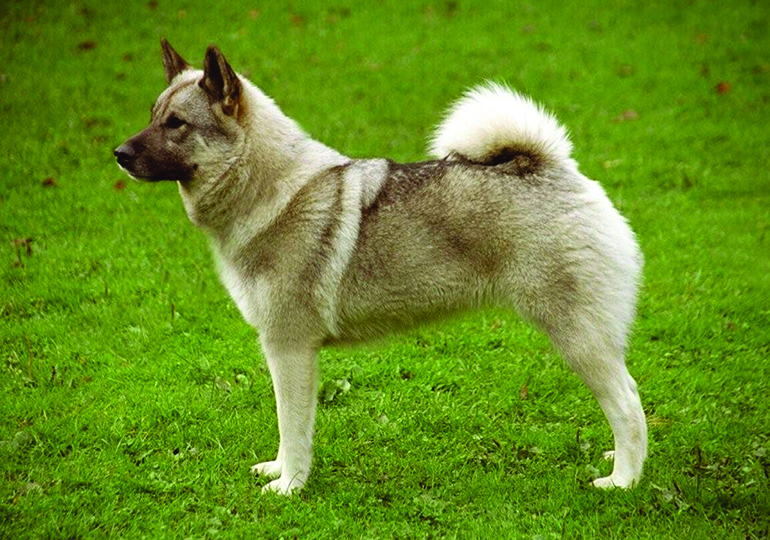Breeds
Norwegian Elkhound

GROUP 4 - HOUNDS
History
As it's name suggests, the Norwegian Elkhound was bred predominantly to hunt big game such as the elk and to survive harsh conditions of deep snow and dense forest.
Although its roots lie in Spitz-type breeds (as its appearance demonstrates), it is categorised as a Hound due to its superior hunting ability and is well known for its endurance and agility.
The Elkhound's history has resulted in a breed that is hardy, intelligent and often protective. More recently, the Elkhound has become a precious family addition. It has a long history by man's side and therefore makes a loyal comrade.
Temperament
Bringing together aspects of both the Hound and Spitz-type breeds, the Norwegian Elkhound proves an interesting mix. It is a friendly and playful breed that is also naturally independent and extremely intelligent. It would make an ideal family companion provided it is well exercised and disciplined.
Due to its long history as a loyal hunting partner, the Elkhound was born for adventure. It will thrive best if allowed to exercise and explore outdoors. Some of its abilities include tracking, herding, hunting and sledding. The Elkhound would also make for a vigilant watchdog.
Appearance
The Elkhound's physical features can all be attributed to the expression of a need.
Demonstrating a powerful appearance, it is a compact breed with a square outline and proud carriage. The robustness of this breed developed through hunts, often lasting days, where its stamina was more important than speed. Its ears are upstanding and its tail is carried over its back.
Its eyes give the Norwegian Elkhound a friendly appearance, not unlike its nature. Elkhounds come in greys of various shades with black tips on the outer coat; lighter areas appear on the chest, stomach, legs, underside of tail, buttocks and in a harness mark. Males should be 52cm at the withers while females should be approximately 49cm.
Maintenance
The Elkhound's coat is dense, naturally weather resistant and relatively easy to groom. It should be brushed regularly; brushing twice a week normally and then daily during shedding season should be sufficient. Built to hunt all day, the Elkhound needs daily exercise to keep healthy and happy. Taking it for a long walk or varied play session will ensure it doesn't get bored or, worse still, destructive.
Health
According to Australian breeders, careful breeding has ensured that Elkhounds in Australia don't suffer from many health problems. Some breeders may test for problems. Probably the most common problem is hip displaysia (HD). Hip scoring is voluntary but may give indication of whether the condition is likely to develop. Progressive Retinal Atrophy (PRA) has been seen in the Norwegian Elkhound as has Fanconi syndrome, however neither have surfaced in the breed in Australia.
Suitability
Although the Elkhound was bred to hunt, it is essentially a friendly and loyal breed that makes it an ideal family addition. It is also ideal for activities such as obedience, tracking or showing, however it should be a family member foremost.
In Conclusion
Now you know a little about the Norwegian Elkhound you may have think that this is the dog for you. Before you make a decision, please make contact with the breed club or your State controlling body for purebred dogs. They will be able to give you information about available puppies and also suggest dog shows where you can see the breed and speak to breeders. In this way you will gain a better perspective of the N and its needs and whether this breed would suit your lifestyle.
Image: worlddogshow2018


